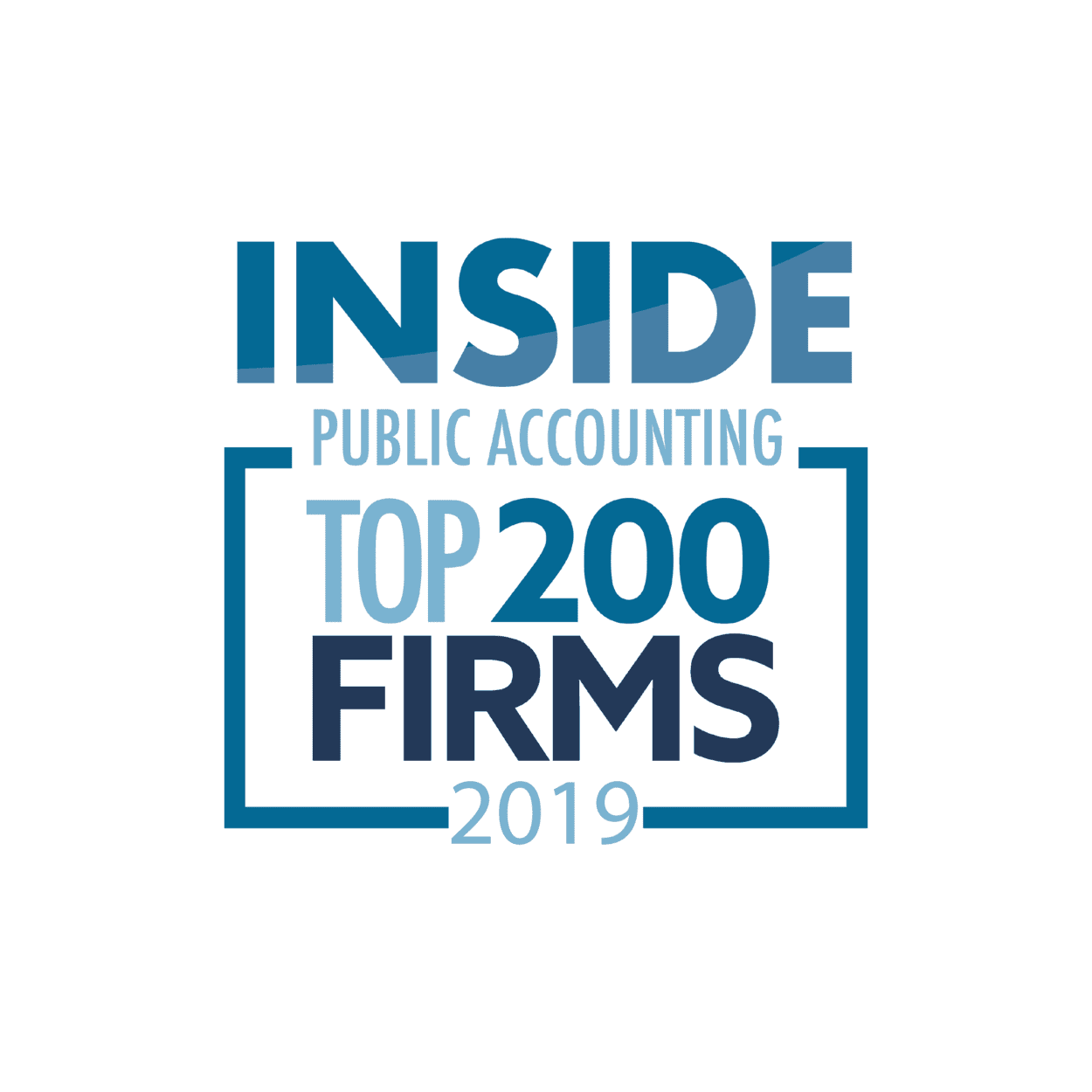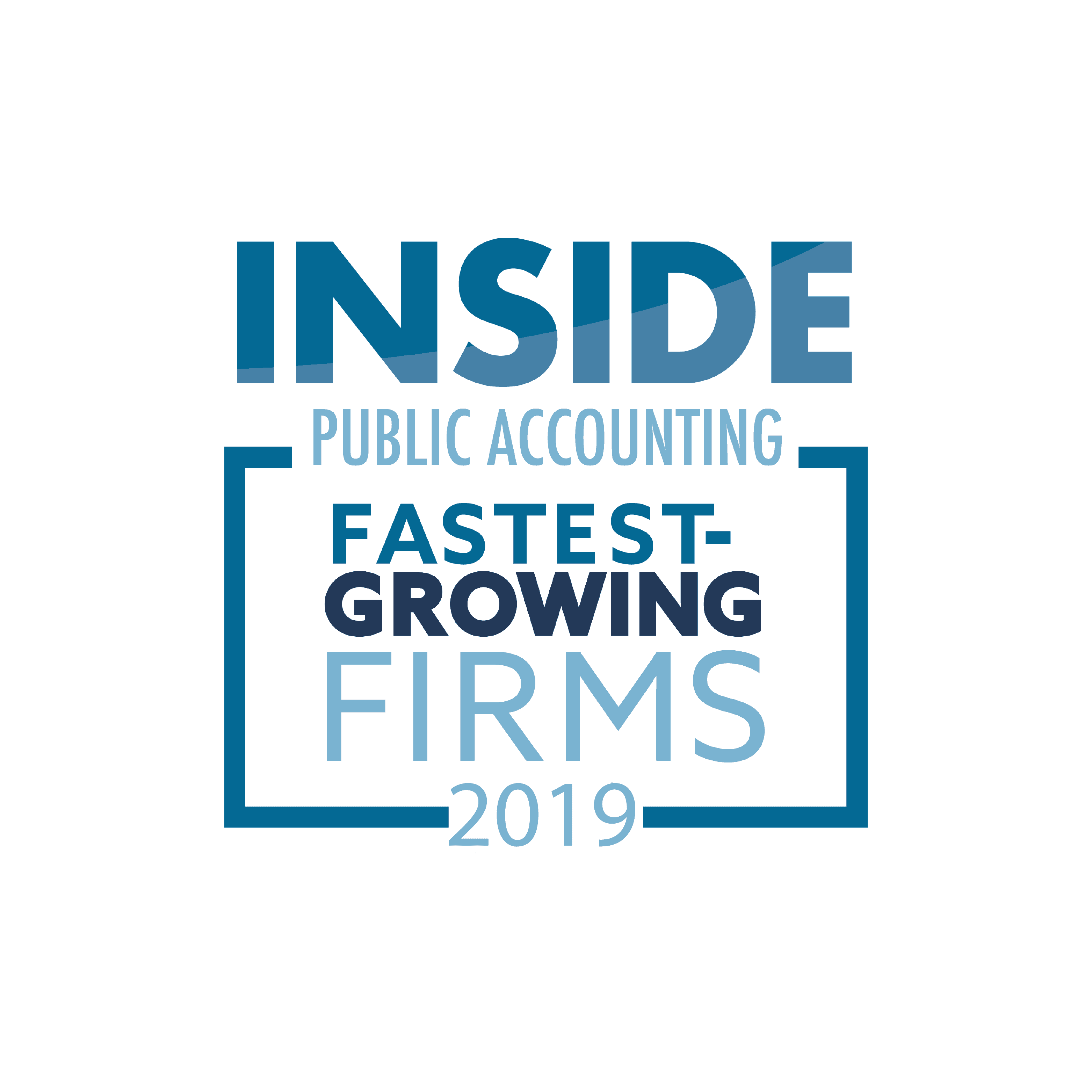Disclaimer: This information was correct at the time of publication; however, new guidance from government agencies may be issued at any time, causing some or all of this information to change. Please visit our COVID-19 Business Strategy Hub for the latest news and ensure you are subscribed here to receive email alerts as they are released. We are working diligently to provide the most current information as it becomes available under our COVID-19 Actionable Insights For Businesses Series.
On May 15, 2020, the Small Business Administration (SBA) released its much-anticipated Paycheck Protection Program (PPP) loan forgiveness application. While the SBA stated that further guidance will be forthcoming, the SBA PPP loan forgiveness application Form 3508, including Schedule A, Schedule A worksheet and the instructions to those forms answer many questions. The purpose of this FAQ document is to provide clear answers to your most pressing questions and insights on how to proceed with your forgiveness application.
1. How do I receive the CARES PPP loan forgiveness? When should I expect to hear back from my bank after submitting my forgiveness application?
To apply for PPP loan forgiveness, you will need to complete the following forms (see above paragraph for the link to the forms):
- SBA Form 3508.
- SBA Form 3508 PPP Schedule A (payroll cost total).
- SBA Form 3508 PPP Schedule A Worksheet (detailed payroll cost calculations).
- Optional – Complete the Demographic schedule.
Please note that verifying documents must be attached to your forgiveness application and the full time equivalent (“FTE”)/25% reduction calculations are required. You must submit your completed SBA Form 3508 along with Schedule A and the Schedule A worksheet to the lender that is servicing your PPP loan. The lender has a 60-day period to render a decision on the forgiveness application from the date it is submitted.
2. How is the forgiveness period defined?
There are now two potential forgiveness periods – the Covered Period (“CP”) and the Alternative Payroll Covered Period (“APCP”). The forgiveness CP is defined as 56 calendar days beginning ON the date you received your PPP loan disbursement.
- Example: If you received your loan on Wednesday, April 22, 2020, the last day of your CP is Tuesday, June 16, 2020 – 56 calendar days later.
For employers with bi-weekly or more frequent payroll periods, an APCP may be elected. The APCP begins on the first day of the first payroll period following your PPP loan disbursement date.
- Example: If you received your PPP loan disbursement on Wednesday, April 22, 2020, and your next payroll period begins Saturday, May 2, then your APCP, if elected, will be the 56 days beginning Saturday, May 2, and ending Friday, June 26.
The APCP may only be used for payroll costs. The CP must be used for all non-payroll forgiveness eligible expenses. The ACPC is offered for administrative convenience (matching your payroll periods to the 8-week period), but may also be attractive for maximizing your forgivable payroll costs.
3. There are various limitations and caps related to calculating the amount of my PPP loan that is forgiven. In what order will those various calculations be applied?
To calculate your loan forgiveness amount, you must perform the following calculations in the order below:
- Step 1: Calculate the full amount of expenses eligible for forgiveness.
- Step 2: Calculate the reduction amount for 25% or more salary/hourly wage reductions and subtract that dollar amount from your total eligible forgiveness amount.
- Step 3: Calculate the FTE Reduction Quotient (it will be 1.0 or less) and multiply that quotient by the reduced forgiveness amount calculated in Step 2. This will be the “Modified Total.”
- Step 4: Calculate the 75% payroll cost requirement by dividing the total payroll costs in your eligible forgiveness amount by 0.75.
- Step 5: Compare your total PPP loan amount, your Modified Total and your 75% payroll cost rule amount. The smallest amount of these numbers is your PPP loan forgiveness amount.
4. How are “incurred and paid” costs defined in the forgiveness application?
The SBA provided the following significant clarifications regarding eligible payroll costs:
- Payroll costs incurred during your CP/APCP and payroll costs paid during your CP/APCP are both eligible for forgiveness. This is a big clarification. So, if you pay payroll during the CP/APCP, it is eligible for forgiveness, and if you incur payroll expense during the CP/APCP, it is also eligible for forgiveness.
- Payroll costs are considered “incurred” on the day that the employee’s pay is earned.
- Payroll costs are considered “paid” on the day paychecks are distributed or an ACH credit transaction is originated.
- Payroll costs incurred but not paid during the last pay period of the CP/APCP are eligible for forgiveness if paid on or before the next regular payroll date, even if that next payroll date is after the CP/ACPC. Otherwise, payroll costs must be paid during the CP or the APCP.
To qualify for forgiveness, all eligible non-payroll costs (rent, utilities and interest) must either be:
- Paid during the CP, or
- Incurred during the CP and paid on or before the next regular billing date, even if the billing date is after the CP.
For both payroll and non-payroll eligible expenses, the SBA has provided some relief for payment of those expenses after your CP/APCP if those expenses are paid on your next payroll or next regular billing cycle.
5. How do I calculate the statutory 25% salary and hourly wage loan forgiveness reduction?
The calculation is set forth in the instructions to the PPP Schedule A Worksheet. Follow these steps:
- Step 1: For each employee paid during your CP/APCP, divide:
- The average annual salary or hourly wage during the CP/APCP by
- The average annual salary or hourly wage from January 1, 2020, to March 31, 2020.
- Step 2: If the result in Step 1 is 0.75 or more, there is no reduction for this employee.
- Step 3: If the result in Step 1 is below 0.75, then you must:
- Determine if the employee qualifies for the June 30, 2020, salary/wage reinstatement safe harbor, or
- Calculate the reduction amount.
6. How do I calculate the statutory average full-time equivalent (FTE)?
The SBA has defined an FTE as 40 hours per week for purposes of this calculation. For each employee, determine the average number of hours paid per week during the CP/APCP and divide by 40 hours. The result is capped at 1.0. For this calculation, you must include employees terminated for any reason during your CP/APCP, but there are exceptions, as noted below.
Exceptions: Include as a 1.0 in the Average FTE column on the Schedule A Worksheet Tables 1 and 2 any employee that:
- You made a good-faith, written offer to rehire an employee during your CP/APCP, which was rejected (documented) by the employee, or
- An employee that was fired for cause, resigned or asked for a reduction in hours.
- If you replaced these employees, do not include them on the Schedule A Worksheet as your FTE calculation would be overstated since the new employee would be included.
- If you did not replace these employees, they need to be included on the Schedule A Worksheet since the total FTE will be compared to your selected prior FTE Reference Period (see question 8).
7. Is there a simpler method for calculating average FTEs?
Yes, there is a simplified method that can be elected, assigning the following quotients:
- 1.0 for employees who worked 40 hours or more per week, and
- 0.5 for employees who worked less than 40 hours per week.
8. How do I calculate my FTE loan forgiveness reduction quotient?
Follow the steps below to calculate your FTE loan forgiveness reduction quotient:
- Step 1: You must select your FTE Reference Period to compare to your CP/APCP FTE calculation. You should follow the same 40-hour-per-week methodology, capped at 1.0, in calculating your FTEs for your elected Reference Period, which is either:
- February 15, 2019, through June 30, 2019, or
- January 1, 2020, through February 29, 2020.
- We recommend calculating both periods and choosing the period with the lowest result.
- Step 2: To determine your FTE Reduction Quotient, you will divide your FTEs calculated for your CP/APCP (Schedule A Worksheet, Tables 1 and 2) by the FTEs calculated for your elected Reference Period. The result is your FTE Reduction Quotient, and if less than 1.0, will reduce your total loan forgiveness. The FTE Reduction Quotient cannot be greater than 1.0.
- Step 3: You will multiply your FTE Reduction Quotient by the entire PPP forgivable loan amount to derive the forgivable loan “Modified Total.”
9. How do I determine if the FTE safe harbor rule applies to me?
First, perform the following calculations to determine if the FTE safe harbor applies to you:
- Step 1: Calculate your average FTE for the period February 15, 2020, through April 26, 2020, using the same 40-hour-per-week methodology.
- Step 2: Calculate your average FTE for the pay period that includes February 15, 2020, using the same 40-hour-per-week methodology.
If the resulting FTE in Step 1 is less than the FTE in Step 2 and by June 30, 2020, your FTE is restored to the Step 2 level, then you qualify for the FTE safe harbor and there is no statutory FTE loan forgiveness reduction, and you enter 1.0 as your FTE Reduction Quotient.
There seems to be a second safe harbor added on the PPP Forgiveness Application Schedule A that allows you to compare FTEs on January 1, 2020, to FTEs on the last day of your CP. If the FTEs on the last day of your CP are equal to or greater than your FTEs on January 1, 2020, then you qualify for this second safe harbor with no FTE reduction in your forgiveness amount. Additionally, you may be able to avoid the Reference Period FTE calculation set forth in question 8 above as well as the February 15 – April 26 FTE safe harbor calculation set forth in question 9 above.
10. How do I calculate the total forgivable amount capped by the 75% payroll cost requirement?
Despite some speculation, you do not lose all of your PPP loan forgiveness if you don’t spend 75% of your PPP loan funding on payroll costs. Your forgiveness just gets capped. To calculate the 75% rule cap:
- Simply divide your total payroll costs as calculated after all FTE and 25% salary/hourly wage reductions by 0.75.
- The result will be the cap for your total PPP loan forgiveness.
For example, your PPP funding is $230,000. If your total payroll costs during your CP/APCP are $150,000, then the maximum forgivable amount will be $200,000 ($150,000/.75). The remaining $30,000 will be repayable over 2 years at 1% interest.
11. How do I calculate my final PPP loan forgiveness amount?
Your PPP loan forgiveness will be the lowest of the following three amounts:
- Your original PPP loan amount,
- The “Modified Total” forgiveness amount calculated after all statutory reductions, and
- The total forgivable amount capped by the 75% Payroll Cost requirement.
12. When should I apply for PPP loan forgiveness?
Your CP begins on the day you receive your PPP funding and ends 56 days later. If you elect the APCP, your 56-day period will be slightly later.
The forgiveness application should be filed:
- As soon as possible after your CP/APCP ends,
- When all payments of forgivable expenses have been made (including next payroll and next billing cycle payments), and
- When all required documentation has been gathered (your application will be rejected without including proper supporting documentation).
Please note that if you are taking advantage of the safe harbors for either the 25% wage/hourly rate reduction or the FTE reduction, you may need to wait to apply for forgiveness until after June 30, 2020.
13. Is my PPP loan forgiveness amount taxable? What about the qualifying expenses that are the basis for loan forgiveness?
The amount of the PPP loan forgiveness is not taxable at the federal level, but the IRS has ruled that qualifying expenses paid with the PPP funds are not deductible in computing your taxable income.
14. How will the SBA review my good-faith certification of need submitted with my PPP loan application?
On May 13, 2020, the Treasury issued the following guidance:
- PPP loans under $2 million: These loans qualify for the good-faith certification safe harbor. The SBA will deem any company with under $2 million of PPP loan funding to have made the required certification concerning the necessity of the loan request in good faith.
- PPP loans greater than $2 million: The SBA will review those loans and consider individual circumstances to determine if the company had an adequate basis for making the good-faith certification related to the necessity of the PPP loan. If your good-faith certification is deemed unacceptable, you will simply need to repay the loan (presumably immediately).
This was good news for all PPP loan recipients, as there will be no administrative enforcement action taken. Make your case through a written narrative, including cash flow projections, key performance indicators and any specific examples of business issues now and in the future.
Final thoughts
The SBA PPP loan forgiveness application and instructions not only provide quite a bit of insight into the forgiveness process but also some timing relief for payroll and other costs. This is a great start, and we await further clarifying guidance from the SBA.
If you need assistance completing your PPP loan forgiveness application and calculating your loan forgiveness amount, the Moore Colson team is available to help. To learn more, visit the COVID-19 Business Services section of our website or contact us. Also, be sure to subscribe here to get our news and alerts as they are released as we are committed to keeping you updated on how to navigate financial challenges associated with the COVID-19 pandemic.
Bert Mills, CPA, is the Managing Partner at Moore Colson. In his role, Bert sets the vision and mission of the Firm and works closely with the Firm’s leadership to drive and implement strategies.
Chris Arnone, CPA, is a Partner and Business Assurance Practice Leader at Moore Colson. Chris has over 20 years of experience providing audit, accounting and consulting services for companies in the transportation, manufacturing, distribution, staffing, private equity and venture capital industries.
Andy Starnes, CPA, is a Partner and Tax Services Practice Leader Moore Colson. Andy’s specialties include corporate tax compliance and planning, business consulting and multi-generational planning with a focus on the construction, professional services and staffing industries.
Tyler Wright, CPA/ABV/CFF, CFE, is a Director in the firm’s Consulting Practice. Drawing on 15 years of experience as an external auditor, internal auditor and forensic accountant, Tyler provides accounting and financial advice in forensic investigations and commercial disputes.










0 Comments